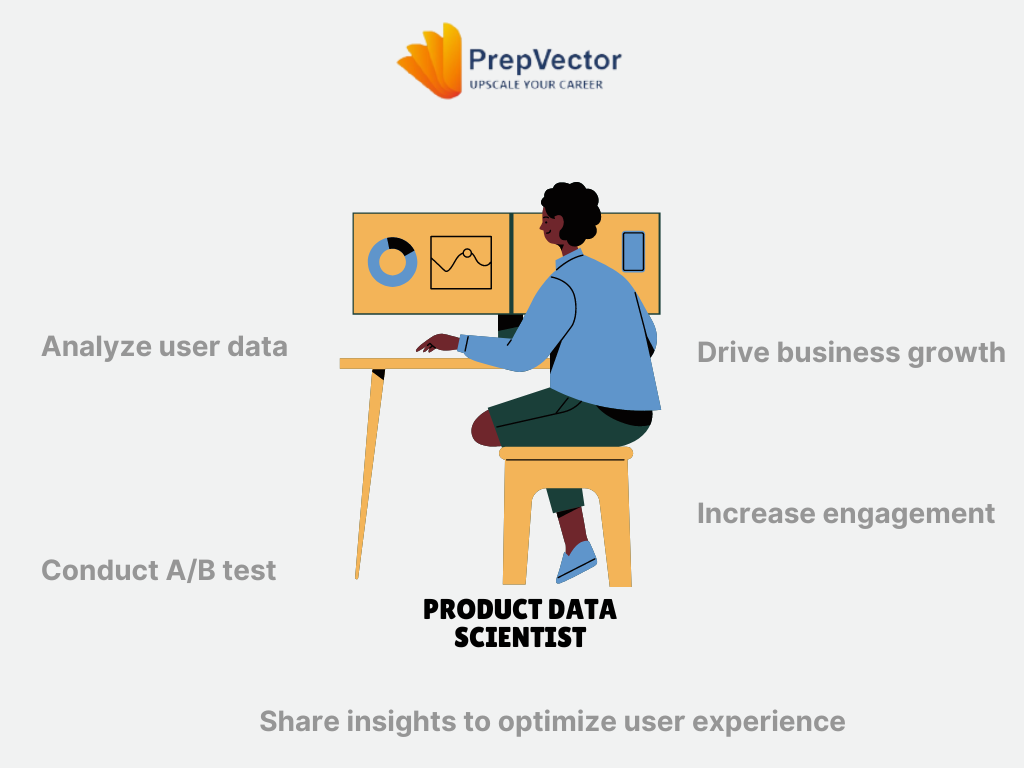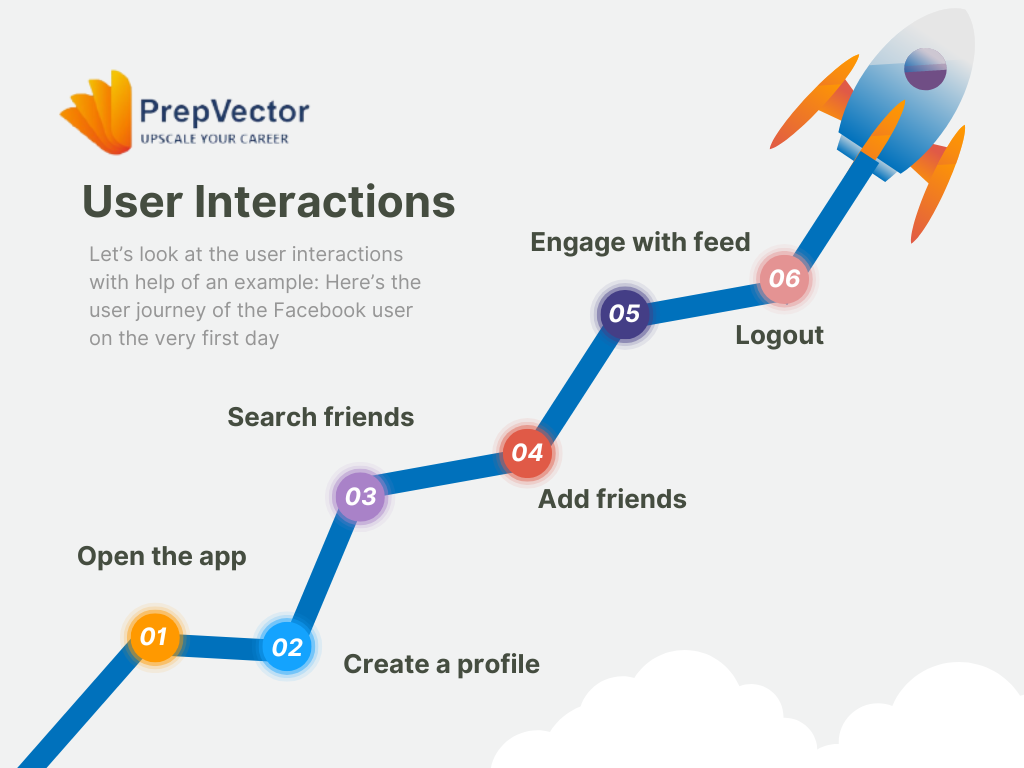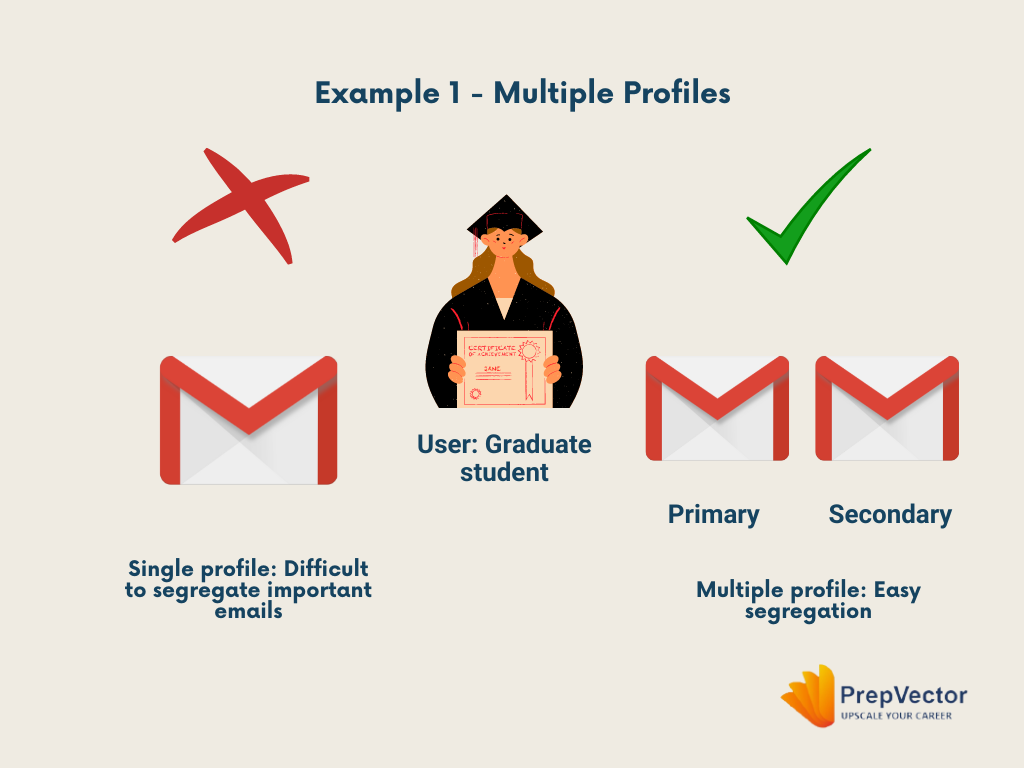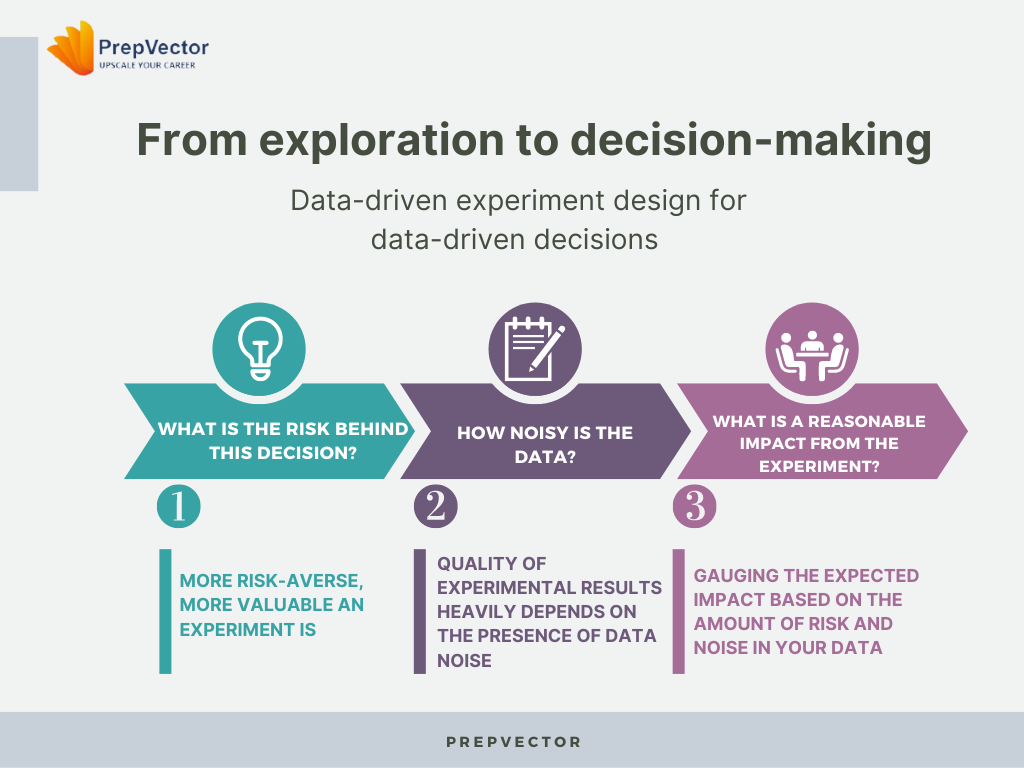Jul 23
/
Parth Patel & Siddarth R
Solving the problem of multiple profiles per user - Part 1
Solving business problems and ensuring product growth is a key responsibility of a Data Scientist. In this blog, we have explained how we can go about solving business problems with a real-world illustration: solving the problem of multiple profiles per user. This article is the first of 3 - part blog series:
Part 1 - Introduction
Part 2 - Metrics and visualizations commonly associated with user behavior
Part 3 - Analytical approach to tackle the challenge of multiple profiles per user
Introduction : Role of a Product Data Scientist
A data scientist is responsible for analyzing complex data sets to uncover insights and solve business problems. They employ statistical techniques, machine learning algorithms, and programming skills to collect, clean, and preprocess data. They then develop models and algorithms to extract meaningful patterns and predictions from the data. Data scientists collaborate with stakeholders to understand their needs, formulate research questions, and present their findings in a clear and actionable manner. Their work helps businesses make data-driven decisions, improve processes, and develop innovative products.
There are various types of data scientists based on their specialization and the domains in which they apply their skills. One of such roles is a product data scientist that focuses specifically on leveraging data to enhance the development and performance of a product. They work closely with cross-functional teams, including product managers, engineers, and designers, to understand user behavior, identify opportunities for improvement, and drive product strategy. Product data scientists analyze user data, conduct A/B tests, and provide insights to optimize user experience, increase engagement, and drive business growth. They use their analytical skills and domain knowledge to uncover trends, develop metrics, and generate actionable recommendations for product enhancements. Product data scientists play a crucial role in aligning data-driven insights with the overall product vision and goals.

User is the king
You often hear the phrase "User is king", this emphasizes the core importance of the user or customer in the context of business-to-consumer (B2C) companies. It signifies that the success of a B2C company depends on understanding and meeting the needs, preferences, and expectations of its users.
In today's competitive landscape, consumers have numerous options and a strong voice through social media and online reviews. B2C companies recognize that providing an exceptional user experience is crucial for customer acquisition, engagement, retention, and loyalty. They strive to create products and services that align with user desires, solve their pain points, and deliver value. They invest in personalization, ease of use, convenience, and exceptional customer service to create a positive and memorable user experience. The goal is to build long-term relationships and foster brand advocacy by consistently exceeding user expectations.
Tracking the user
Since the user is the pivotal stakeholder for your product, let’s look at how businesses look at the user and drive product growth.
Companies gain insights on how the users navigate and engage with the platform with the help of ‘User Interaction Analysis’. This analysis enables businesses to identify potential challenges and areas of friction that users may encounter. By comprehending these pain points, companies can make informed decisions backed by data to enhance the user experience, streamline user flows, and improve overall usability. The decisions could range from identifying and improving the features that are frequently utilized, and those features that can be retired.
Let’s look at the user interactions with help of an example: Here’s the user journey of the Facebook user on the very first day:
Open the app → create a profile → search friends → add friends → engage with feed → logout

At each step, users are tracked through their journey and metrics are defined. Some examples are as follows:
- Number of times the app is launched by users
- Percentage of users who successfully create a profile after opening the app
- Number of times users search for friends
- Number of friend requests accepted by other users
- Average number of likes, comments, and shares per user on the feed
A thorough analysis of the metrics convey a clear picture of how the user traverses with the product and engages at each step.
However, it's important to note that users may sometimes attempt to exploit features to fulfill their personal needs, which may not align with the primary goals of the product or its features. This behavior can lead to incorrect business decisions, and the resulting metrics may be distorted. Let's delve deeper into this aspect.
Users can also game the system:
‘Create your profile’ is often one of the first steps that any user encounters when consuming any digital platform service. It is a common practice for business to allow a user to create multiple profiles, this behavior is particularly common in online marketplaces, social media platforms and dating apps.
You have the convenience to create multiple profiles/accounts depending on how you intend to use them. Here are a few examples:
Example 1:
If you are a fresh out of school graduate who has just started applying for jobs, in addition to your primary gmail account you might want to create an additional secondary account just to track your job applications. Doing so will help keep your primary inbox from getting cluttered by all the auto-generated application emails and the secondary inbox will make it easier for you to find and respond to relevant job related emails. At the outset, this may seem to cause less harm. However, if you don the hat of a Product Manager of Gmail, you will be double counting users unless you have checks and balances.

Example 2:
Another common occurrence of this behavior is when using social media platforms. Users might prefer creating multiple profiles with different privacy settings. For example, a social media influencer or a celebrity can choose to create a private profile for close friends and family in addition to their public profile. Many times, a user creates multiple profiles on a social media platform to harass or bully other users, often using anonymous or fake identities to avoid detection. Social media platforms such as Twitter, and Facebook have large teams to detect spam, fake news, and propaganda, often using bots or automated tools to amplify their message and manipulate public opinion.
Oftentimes, a user creates multiple profiles on social media platforms to engage in “follow-for-follow” or “like-for-like” schemes, where users agree to follow or like each other’s content in order to artificially inflate their metrics.
Example 3:
Similarly on dating apps the same user might choose to create a profile to find something serious and long term while another maybe more discreet profile to find short term connections.
Reference here.
Example 4:
In an online marketplace, users create multiple profiles to artificially boost their sales numbers by providing rave reviews about their product. Sometimes, users create multiple accounts (especially if your platform relies on email ids for account creation) in order to redeem a ‘NEW USER’ coupon multiple times or a ‘FIRST PURCHASE’ discount.
We can enumerate several such instances where the user identifies the loopholes in the platform to accomplish their needs.Let’s take a step back and analyze the problems that arise if there is no way to detect multiple user profiles.
What is the impact on the product?

While creating multiple profiles might seem like a convenient feature for the user, it poses several problems for the business. As a Product Data Scientist, you need to be aware of the following:
1. User Engagement Metrics: Fake profiles can artificially inflate user engagement metrics, such as likes, comments, shares, and followers, leading to an inaccurate assessment of content popularity. This can mislead content creators, advertisers, and platform algorithms in determining what content is genuinely resonating with users.
2. Reach and Impressions: Fake profiles may generate fake interactions, such as views, impressions, and clicks, which can inflate the reach of content. This can impact the accuracy of metrics related to content visibility and effectiveness of advertising campaigns.
3. Conversion Rates: If fake profiles interact with advertisements or promotional content, they can distort conversion rate metrics, making it difficult to assess the actual effectiveness of marketing efforts.
4. Audience Demographics: Fake profiles may misrepresent user demographics, such as age, gender, location, and interests. This can lead to skewed insights and targeting strategies, affecting decisions related to content creation, advertising, and product development.
5. Influencer Metrics: Fake profiles can distort metrics used to evaluate the influence and reach of social media influencers. This can impact decisions related to influencer partnerships, collaborations, and marketing campaigns.
6. User Growth and Retention: If a significant number of fake profiles are created, it can artificially inflate user growth and retention metrics, giving a false impression of platform popularity and user engagement.
7. Sentiment Analysis: Fake profiles can generate fake comments or reviews, influencing sentiment analysis algorithms and leading to biased or inaccurate assessments of public opinion.
Outcomes:
This can ultimately lead to a bad user experience and user distrust since they might have purchased a product based on the unethically boosted sales number but might have a bad experience using the product. If users do not feel that they can trust the platform, they are less likely to engage with it and may ultimately abandon it altogether. This can have serious consequences for the business, particularly if it relies heavily on user-generated content or relies on user engagement for revenue.
On dating apps, while this feature allows users to create separate profiles based on their preferences and needs, it also allows spammers to create multiple profiles and degrade the user experience on the app.
This blog series delves into resolving the issue of multiple user profiles generated per user. Over the course of subsequent blogs, we will examine various aspects including metrics, dashboards, hypotheses, analytical methodologies, and the resulting outcomes. Each blog will provide insights and solutions pertaining to different facets of tackling this problem.
The series aims to offer a comprehensive exploration, presenting a step-by-step approach to address the challenges posed by multiple user profiles in a systematic manner.
The series aims to offer a comprehensive exploration, presenting a step-by-step approach to address the challenges posed by multiple user profiles in a systematic manner.
About the authors
Parth Patel
Prinicpal Data Scientist at
Elevance Health
Prinicpal Data Scientist at
Elevance Health
As a data scientist with 8+ years of experience, I have a strong track record of using data-driven approaches to solve complex problems and drive business growth. I have expertise in a wide range of data science tools and techniques, including machine learning, statistical modeling, data visualization, and big data technologies.
Siddarth R
Lead Data Scientist at
Microsoft
Lead Data Scientist at
Microsoft
Siddarth has 19 years experience across Tech and Healthcare. He currently works as Principal Data Science Manager at Microsoft. He is leading a team of data scientists and engineers to deliver strategies for optimization.

Copyright © 2022
Contact Us!
Got a question? Reach out to us and we will get back to you ASAP!
Thank you!
One more step!
Just a few details before you can download the resources.
Thank you!
Download your resource here
Download your resource here
One more step!
Just a few details before you can download the resources.
Thank you!
Download your resource here
Download your resource here
By submitting this form, you consent to abide by the Privacy Policy outlined by PrepVector.
One more step!
Just a few details before you can download the resources.
Thank you!
Download your resource here
Download your resource here
One more step!
Just a few details before you can download the resources.
Thank you!
Download your resource here
Download your resource here
One more step!
Just a few details before you can download the resources.
Thank you!
Download your resource here
Download your resource here
One more step!
Just a few details before you can download the resources.
Thank you!
Download your resource here
Download your resource here
One more step!
Just a few details before you can download the resources.
Thank you!
Download your resource here
Download your resource here
One more step!
Just a few details before you can download the resources.
Thank you!
Download your resource here
Download your resource here
One more step!
Just a few details before you can download the resources.
Thank you!
Download your resource here
Download your resource here
One more step!
Just a few details before you can download the resources.
Thank you!
Download your resource here
Download your resource here
Access has ended, sorry.
But you can reach out to us at operations@prepvector.com if you need access to the giveaway.
One more step!
Just a few details before you can download the resources.
Thank you!
Download your resource here
Download your resource here
One more step!
Just a few details before you can download the resources.
Thank you!
Download your resource here
Download your resource here
By submitting this form, you consent to abide by the Privacy Policy outlined by PrepVector.
One more step!
Just a few details before you can download the resources.
Thank you!
Download your resource here
Download your resource here
By submitting this form, you consent to abide by the Privacy Policy outlined by PrepVector.

